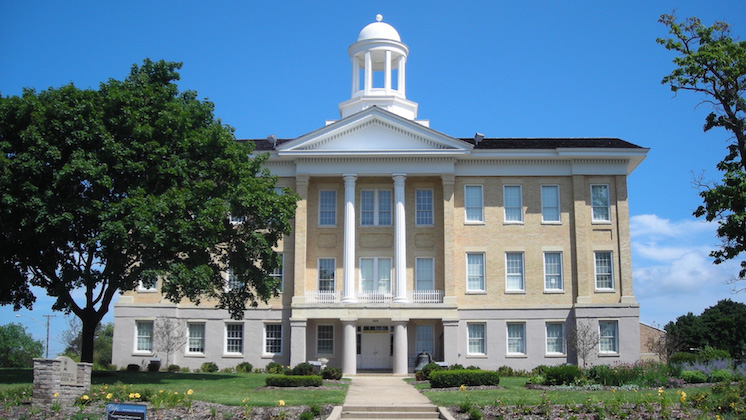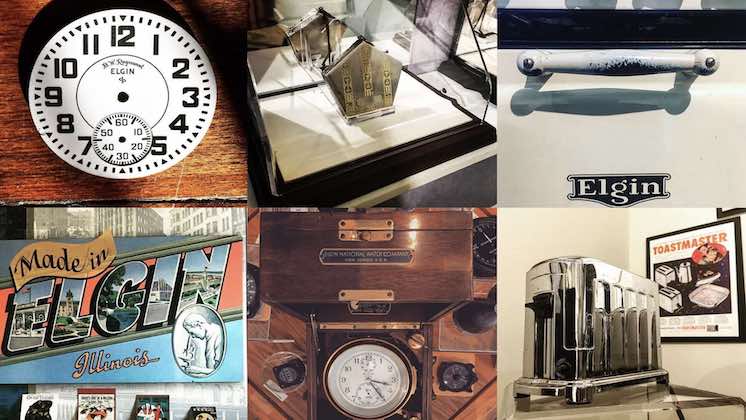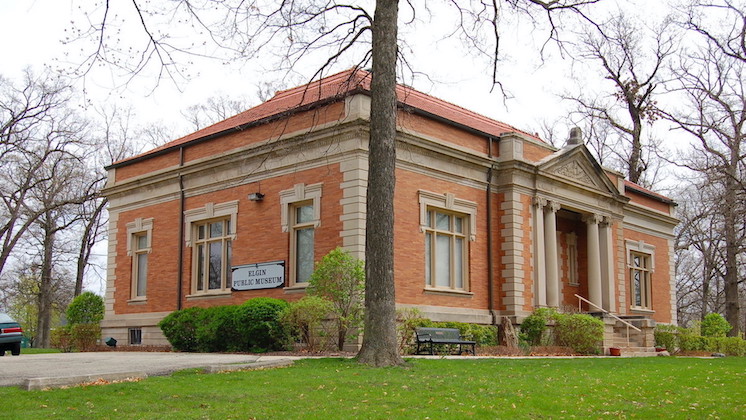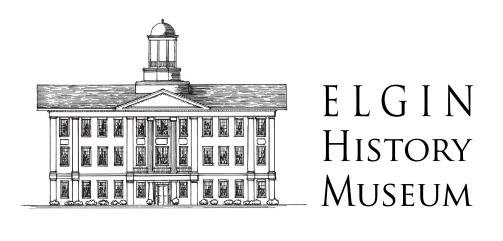
The Elgin History Museum is housed in an 1856 landmark building known as Old Main that was once part of the Elgin Academy campus. The building was designed in the Greek Revival style. Museum staff helps welcome visitors to the museum, educates the public about Elgin history and assists with research inquiries.
The Elgin Area Historical Society, which was founded in 1961, is a thriving organization that operates within the museum. The society has a board of directors with a mission that is driven to preserve and educate the community about Elgin history. Through permanent and changing exhibits, the museum brings to life Elgin’s rich heritage. Permanent exhibits include Elgin National Watch Company, the Elgin River to Rails exhibit, Elgin Road Race memorabilia and more.
Elgin history enthusiasts will enjoy shopping at the museums online store. Shop a variety of books, artwork, jewelry, clothing, decor and more.
The Nancy Kimball House
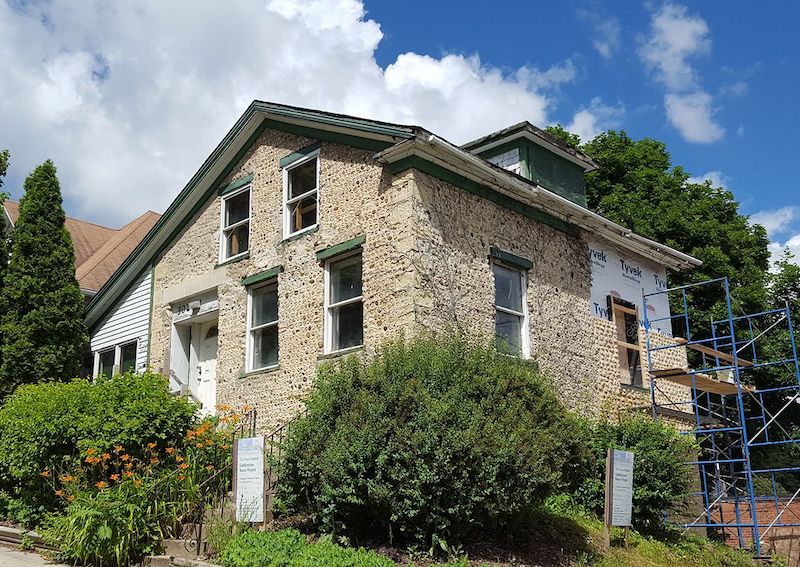 Built in 1846, the Nancy Kimball house is the oldest cobblestone building in Elgin, and one of the last ones left standing at 302 W. Chicago Street. It was built for the widow of one of Elgin’s founders, Joseph Kimball by her sons, William and Samuel. The Kimball brothers later served as mayors of the city. This building is unique and important to Elgin. The Elgin History Museum volunteers, board members and staff have been transforming the Nancy Kimball Cobblestone House into a gallery space, a work room for demonstrations and community projects, a venue for education programs, a small group meeting space and a small office space for the Near West Neighbors Association and Elgin History Museum. The project is being overseen by the Elgin History Museum.
Built in 1846, the Nancy Kimball house is the oldest cobblestone building in Elgin, and one of the last ones left standing at 302 W. Chicago Street. It was built for the widow of one of Elgin’s founders, Joseph Kimball by her sons, William and Samuel. The Kimball brothers later served as mayors of the city. This building is unique and important to Elgin. The Elgin History Museum volunteers, board members and staff have been transforming the Nancy Kimball Cobblestone House into a gallery space, a work room for demonstrations and community projects, a venue for education programs, a small group meeting space and a small office space for the Near West Neighbors Association and Elgin History Museum. The project is being overseen by the Elgin History Museum.
Elgin’s Butter History
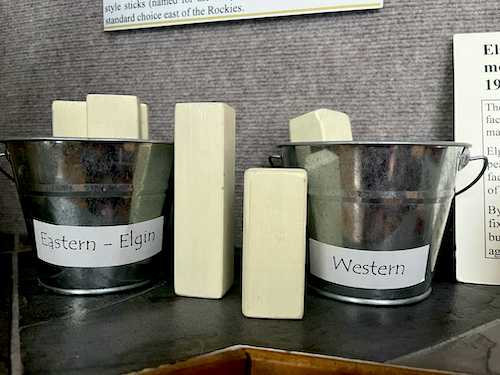 Elgin was once famous for milk and butter, and was even known as the butter capital of the world. Over 6,000 cows lived on hundreds of farms all around Elgin. The amount of milk, butter and cheese sold from Elgin in 1892 equates to more than $300 million in today’s dollars.
Elgin was once famous for milk and butter, and was even known as the butter capital of the world. Over 6,000 cows lived on hundreds of farms all around Elgin. The amount of milk, butter and cheese sold from Elgin in 1892 equates to more than $300 million in today’s dollars.
Do you know the difference between an East Coast and a West Coast stick of butter? The longer, skinny sticks are “East Coast” sticks, which came to be known as Elgin sticks. This is because the Elgin Butter Co. manufactured a specific butter press, the Elgin Butter Cutter, which standardized the longer, skinny shape and size. On the West Coast, butter is in more of a short, thick shape.
Want to learn more about the history of dairies and butter in Elgin? Explore the Dairies to Prairies series from the Elgin History Museum here.
To stay up-to-date on happenings sign up for the Elgin History Museum newsletter here.
Sorry, no records were found. Please adjust your search criteria and try again.
Sorry, unable to load the Maps API.

The Elgin History Museum is housed in an 1856 landmark building known as Old Main that was once part of the Elgin Academy campus. The building was designed in the Greek Revival style. Museum staff helps welcome visitors to the museum, educates the public about Elgin history and assists with research inquiries.
The Elgin Area Historical Society, which was founded in 1961, is a thriving organization that operates within the museum. The society has a board of directors with a mission that is driven to preserve and educate the community about Elgin history. Through permanent and changing exhibits, the museum brings to life Elgin’s rich heritage. Permanent exhibits include Elgin National Watch Company, the Elgin River to Rails exhibit, Elgin Road Race memorabilia and more.
Elgin history enthusiasts will enjoy shopping at the museums online store. Shop a variety of books, artwork, jewelry, clothing, decor and more.
The Nancy Kimball House
 Built in 1846, the Nancy Kimball house is the oldest cobblestone building in Elgin, and one of the last ones left standing at 302 W. Chicago Street. It was built for the widow of one of Elgin’s founders, Joseph Kimball by her sons, William and Samuel. The Kimball brothers later served as mayors of the city. This building is unique and important to Elgin. The Elgin History Museum volunteers, board members and staff have been transforming the Nancy Kimball Cobblestone House into a gallery space, a work room for demonstrations and community projects, a venue for education programs, a small group meeting space and a small office space for the Near West Neighbors Association and Elgin History Museum. The project is being overseen by the Elgin History Museum.
Built in 1846, the Nancy Kimball house is the oldest cobblestone building in Elgin, and one of the last ones left standing at 302 W. Chicago Street. It was built for the widow of one of Elgin’s founders, Joseph Kimball by her sons, William and Samuel. The Kimball brothers later served as mayors of the city. This building is unique and important to Elgin. The Elgin History Museum volunteers, board members and staff have been transforming the Nancy Kimball Cobblestone House into a gallery space, a work room for demonstrations and community projects, a venue for education programs, a small group meeting space and a small office space for the Near West Neighbors Association and Elgin History Museum. The project is being overseen by the Elgin History Museum.
Elgin’s Butter History
 Elgin was once famous for milk and butter, and was even known as the butter capital of the world. Over 6,000 cows lived on hundreds of farms all around Elgin. The amount of milk, butter and cheese sold from Elgin in 1892 equates to more than $300 million in today’s dollars.
Elgin was once famous for milk and butter, and was even known as the butter capital of the world. Over 6,000 cows lived on hundreds of farms all around Elgin. The amount of milk, butter and cheese sold from Elgin in 1892 equates to more than $300 million in today’s dollars.
Do you know the difference between an East Coast and a West Coast stick of butter? The longer, skinny sticks are “East Coast” sticks, which came to be known as Elgin sticks. This is because the Elgin Butter Co. manufactured a specific butter press, the Elgin Butter Cutter, which standardized the longer, skinny shape and size. On the West Coast, butter is in more of a short, thick shape.
Want to learn more about the history of dairies and butter in Elgin? Explore the Dairies to Prairies series from the Elgin History Museum here.
To stay up-to-date on happenings sign up for the Elgin History Museum newsletter here.
Sorry, no records were found. Please adjust your search criteria and try again.
Sorry, unable to load the Maps API.


